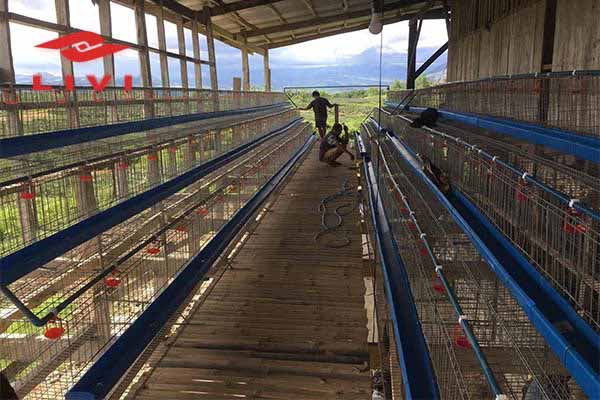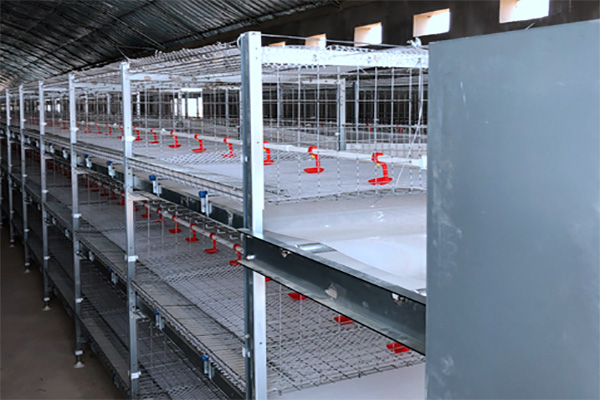Government subsidy policy for automated chicken farms in Uganda
Time : 2025-06-28
Introduction
The government of Uganda has recognized the importance of the poultry industry in the country’s agricultural sector and, as a result, has implemented several subsidy policies to support the development of automated chicken farms. These policies are aimed at promoting technological advancement, enhancing production efficiency, and ultimately improving the economic viability of poultry farming. In this article, we will delve into the details of the government subsidy policy for automated chicken farms in Uganda, focusing on the types of subsidies offered, their impact on the industry, and the necessary steps for farmers to access these benefits.
The Need for Government Subsidy
The poultry industry in Uganda has been growing at a rapid pace in recent years, driven by an increasing demand for poultry products both domestically and internationally. However, despite this growth, there are several challenges that have hindered the further development of the industry, including high production costs, limited access to technology, and lack of infrastructure. To address these challenges, the government has introduced various forms of subsidies to support automated chicken farms.
High Production Costs
One of the major obstacles for poultry farmers in Uganda is the high cost of production. This includes the cost of feed, housing, healthcare, and labor. Without subsidies, small-scale farmers often struggle to afford the necessary inputs to run an efficient and profitable farm. Government subsidies help to offset these costs, making it more feasible for farmers to invest in their businesses and increase production.
Access to Technology
Automated chicken farms require modern technology and equipment to ensure efficient operations and high-quality production. However, the cost of purchasing this technology can be prohibitive for many farmers, especially small-scale operations. Subsidies can be used to provide financial assistance for the purchase of equipment, such as automated feeders, climate control systems, and biosecurity measures.
Lack of Infrastructure
Inadequate infrastructure, such as electricity and water supply, can also be a barrier to the establishment and expansion of automated chicken farms. The government’s subsidy policy aims to address this issue by investing in the development of rural infrastructure that supports agricultural activities.
Types of Subsidies Offered
The government of Uganda offers several types of subsidies to support automated chicken farms, including direct financial assistance, tax incentives, and infrastructure development. Here is a closer look at each of these subsidy types:

Direct Financial Assistance
Direct financial assistance is provided through grants and low-interest loans to farmers who are willing to invest in automated chicken farming. This type of subsidy can be used for the purchase of equipment, training, and other necessary expenses. The government often sets specific criteria for eligibility to ensure that the subsidies reach the intended recipients.
Low-Interest Loans
Low-interest loans are another form of financial assistance that can be used for the establishment and expansion of automated chicken farms. These loans are offered with favorable interest rates, making it easier for farmers to manage their debt and invest in the long-term success of their farms.
Tax Incentives
Under the government subsidy policy, automated chicken farms may be eligible for tax incentives. These incentives can help reduce the financial burden on farmers, freeing up more capital for investment in their businesses.
Infrastructure Development
Infrastructure development subsidies are provided to improve the accessibility and quality of infrastructure in rural areas. This includes the construction and maintenance of roads, electricity networks, and water supply systems, which are essential for the operation of automated chicken farms.
The Impact of Subsidy Policies
The introduction of the government subsidy policy for automated chicken farms in Uganda has had a significant impact on the poultry industry. Some of the key benefits include:
Increased Production Efficiency
By providing farmers with access to modern technology and equipment, the subsidy policy has enabled them to increase their production efficiency. This has led to higher yields, improved quality of poultry products, and reduced costs per unit.
production efficiency. This has led to higher yields, improved quality of poultry products, and reduced costs per unit.
Economic Growth
The expansion of the poultry industry has contributed to economic growth in Uganda, creating jobs and generating income for farmers and rural communities. This has also stimulated the demand for related services and products, such as feed suppliers and processing facilities.
Reduced Food Insecurity
The increased production of poultry products has helped to reduce food insecurity in Uganda, particularly in rural areas where access to diverse and nutritious food is limited.
Accessing the Subsidies
Accessing the government subsidies for autom ated chicken farms in Uganda involves several steps. Here is a guide for farmers seeking to benefit from these policies:
ated chicken farms in Uganda involves several steps. Here is a guide for farmers seeking to benefit from these policies:
Eligibility Criteria
Farmers must meet certain eligibility criteria to qualify for subsidies. These criteria typically include the size of the farm, level of automation, and financial requirements. It is essential for farmers to ensure they meet these criteria before applying for subsidies.
Application Process
The application process for government subsidies varies depending on the type of subsidy. However, it generally involves submitting a detailed business plan, financial statements, and other required documents. Farmers are encouraged to seek guidance from relevant government agencies or agricultural organizations to ensure a smooth application process.
Documentation and Reporting
Once a subsidy is approved, farmers must comply with the reporting requirements set by the government. This may include regular updates on the use of funds, progress reports on the implementation of the project, and compliance with environmental and biosecurity regulations.
Conclusion
The government subsidy policy for automated chicken farms in Uganda has proven to be an effective tool in supporting the growth and development of the poultry industry. By addressing the challenges of high production costs, limited access to technology, and inadequate infrastructure, these subsidies have helped to increase production efficiency, stimulate economic growth, and reduce food insecurity. As the poultry industry continues to evolve, the government’s commitment to providing support through subsidies will remain crucial in ensuring its long-term success.











